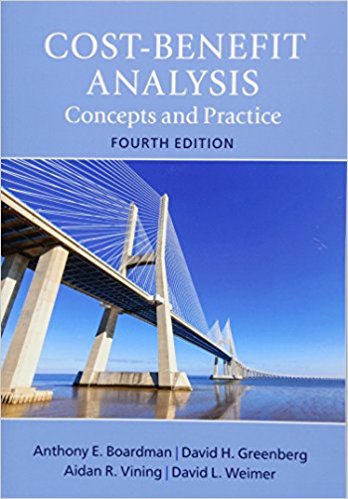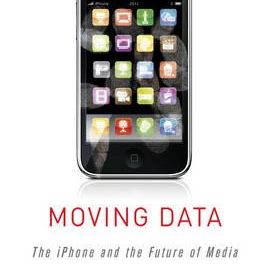 Authors: Anthony E Boardman, David H. Greenberg, Aidan R. Vining, and David L. Weimer
Authors: Anthony E Boardman, David H. Greenberg, Aidan R. Vining, and David L. Weimer
Publisher: Cambridge University Press – 541 pages
Book Review by: Sonu Chandiram
Cost-Benefit Analysis or CBA for short is such a useful tool not only in business but also in daily living. In business, CBA helps determine our net benefit, or the difference between our final sales price and our total cost. It also helps us make practical decisions in business when time is involved. After all, as has been often said, “time is money.” Is something worth putting our time into, if the financial benefit is dubious, or at best, likely very little?
In daily living, CBA can be used in determining non-financial benefits such as for example, pleasure in traveling to see new and interesting places. Are you one who wants to get to a destination quickly and comfortably, and spend lots of time enjoying the place? Are the financial or time costs of travel to the place you are going to, important considerations? What is more important to you – money or time?
In the words of the authors, this fourth edition of Cost-Benefit Analysis is an authoritative, market-leading textbook that provides a practical introduction to cost-benefit analysis through problem-solving.
The text uses a consistent application of a nine-step framework for interpreting a cost-benefit analysis. This latest edition has been fully revised, updated, and re-organized to provide the material more effectively. It presents application over abstract theory and clear discussion over mathematics to appeal to a larger, more diverse audience.
This book focuses on CBA as used in business, and to give you an overview, we list below the titles of its three Parts and 20 chapters:
- Part I. Overview
- Introduction to Cost-Benefit Analysis
- Concept Foundations of Cost-Benefit Analysis
- Fundamentals of CBA
- Economics Foundations of Cost-Benefit Analysis
- Valuing Benefits and Costs in Primary Markets
- Valuing Benefits and Costs in Secondary Markets
- Discounting Benefits and Costs in Future Time Periods
- Dealing with Uncertainty: Expected Values, Sensitivity Analysis, and the Value of Information
- Option Price and Option Value
- Existence Value
- The Social Discount Rate
- Predicting and Monetizing Impacts
- Valuation of Impacts
- Valuing Impacts from Observed Behavior: Experiments and Quasi-Experiments
- Valuing Impacts from Observed Behavior: Direct Estimation and Demand Curves
- Valuing Impacts from Observed Behavior: Indirect Market Methods
- Contingent Valuation: Using Surveys to Elicit Information About Costs and Benefits
- Shadow Prices from Secondary Sources
- Shadow Prices: Applications to Developing Countries
- Related Methods
- Cost-Effectiveness Analysis
- Distributionally-Weighted Cost-Benefit Analysis
- How Accurate is CBA?
The four authors begin their initial chapter – Introduction to Cost-Benefit Analysis – by quoting parts of a note written in 1772 in London by a person named B. Franklin. In it, he suggests taking a sheet of paper, making two columns by drawing a line in the middle, and writing ‘Pros’ and ‘Cons’ on the top of the columns. Probably all of us are familiar with this simple method of making small decisions in order to arrive at a final ‘yes’ or ‘no’ big decision.
While this book of 541 pages is about much more than using this simple method, this example provides us a sort of framework in the decision-making process.
The book explains basic concepts such as Pareto Efficiency in chapter 1, which the authors describe as “a simple and appealing definition of efficiency…that underlies modern welfare economics and CBA. An allocation of goods is Pareto efficient if not alternative allocation can make at least one person better off without making anyone else worse off.”
This concept is illustrated in at least two figures, one showing the benefits of improvements over the status quo, and the other showing the relationship between ‘opportunity cost’ and ‘willingness to pay’
There are numerous considerations to take into account before making decisions, and the various factors to be considered are presented in text and graphic forms, and discussed at length in the 20 chapters.
Each chapter has materials that are systematically organized with common components, such as
- Introductory paragraph or two about what is covered in the chapter
- Discussions of concepts (e.g. Pareto Efficiency in chapter 1), topics and subtopics
- Illustrations to help you understand concepts
- Tables that lay out costs, benefits, and net benefits (or losses) of a number of projects
- Exhibits in box form
- Conclusion
- Exercises (to test your recall of knowledge of material covered in the chapter)
- Notes
This is an excellent book to place in your library, for your systematic, efficient, and effective decision-making in business in particular and life in general.
Authors:
Anthony E Boardman is the Van Dusen Professor of Business Administration at the University of British Columbia, with locations in Vancouver and Okanagan in Canada.
David H. Greenberg is Professor Emeritus f Economics at the University of Maryland in Baltimore, Maryland.
Aidan R. Vining is Professor of Business and Government Relations at Simon Fraser University with three locations in Greater Vancouver in British Columbia, Canada.
David L. Weimer is the Edwin E. Witte Professor of Political Economy at the University of Wisconsin in Madison, Wisconsin.







